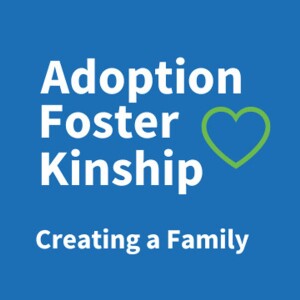
Creating a Family: Talk about Adoption & Foster Care
Kids & Family:Parenting

Are you thinking about adopting from foster care or adopting a child you are already fostering? Are you wondering how to help the child transition to adoption? Our guests are Hope Middlebrook, a foster parent recruiter for Arrow Child and Family Services, and Jennifer O’Brien, a Licensed Clinical Social Worker and Regional Director for Arrow’s Foster Care Programs.
In this episode, we cover:
- Two different scenarios:
- You are the foster parents of the child you are going to adopt.
- You are adopting a child who is living with another foster family.
- At what age do kids understand the concept of adoption and what it means in their life?
- If you are adopting a child you are fostering.
- How is adoption different from fostering?
- What are some typical emotions (positive and negative) a child might feel? Grief is to be expected.
- How far in advance should the child be informed?
- What are some typical behaviors you might see?
- What are some typical emotions and behaviors you might see from other children already living in your home?
- If you are adopting a child living with another resource family or group home.
- What are some typical emotions (positive and negative) a child might feel? Grief is to be expected.
- How far in advance should the child be informed?
- How long should the process take?
- What can the adults do to make the process less stressful for the child?
- What are some typical behaviors you might see from a child that is moving to yet another home and another parent?
- What are some typical emotions and behaviors you might see from other children already living in your home?
- What are the pros and cons of changing the child’s name? First name? Last name?
- What are some tips for parents to help their child transition from foster child to adopted child? Some of these will apply to a child you are fostering and some to a child whom you are not fostering.
- Get all the information on the child available from his file, caseworker, and previous foster parents.
- Decide what type of relationship you can have with your child’s birth family. Come up with ways to help your child maintain safe connections to their biological roots.
- Work with the former foster family and the child or youth to determine what type of relationship can continue with the foster family after the child moves to your home.
- Go slow. Ideally, visit the child first in their foster home, then take the child out for the day, then have the child spend the night with the adoptive family, then the weekend before they finally move in.
- Give the child/youth as much voice in the process as possible.
- Anticipate problems and come up in advance with ways to work through them and outside resources to use.
- Create a Lifebook for your child and use this book to help explain some of the differences between foster care and adoption. Get pictures from the foster family and the caseworker.
- Prepare children already in the home for an adjustment period and how kids who have experienced trauma might behave.
- Think about how you will maintain a tie to their cultural, racial, or ethnic roots.
- Identify support for yourself. You will, at some point, likely feel discouraged, frustrated, and maybe even regretful. Where will you turn for support?
- Rite of passage at finalization.
- What to do if the tween or teen does not want to be adopted?
- How to explore the youth’s reasons?
- Allow space to change their mind.
- What other options are available outside of adoption?
Please leave us a rating or review RateThisPodcast.com/creatingafamily
More Episodes
Prenatal Exposure: Diagnosing and Treatment
 2024-11-06
2024-11-06
 2024-11-06
2024-11-06
Talking With Kids About Adoption
 2024-10-16
2024-10-16
 2024-10-16
2024-10-16
Intergenerational Trauma
 2024-09-11
2024-09-11
 2024-09-11
2024-09-11
012345678910111213141516171819
Create your
podcast in
minutes
- Full-featured podcast site
- Unlimited storage and bandwidth
- Comprehensive podcast stats
- Distribute to Apple Podcasts, Spotify, and more
- Make money with your podcast
It is Free
- Privacy Policy
- Cookie Policy
- Terms of Use
- Consent Preferences
- Copyright © 2015-2024 Podbean.com





